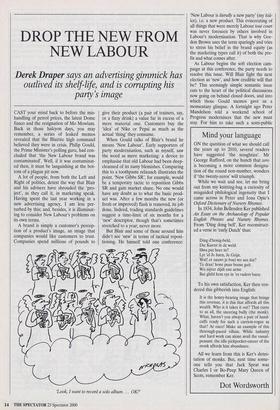Mind your language
ON the question of what we should call the years up to 2010, several readers have suggested 'the noughties'. Mr George Rufford, on the hunch that zero is becoming a more common designa- tion of the round non-number, wonders if 'the twenty-zeros' will triumph.
While we wait and see, let me bring out from my knitting-bag a curiosity of misguided philological ingenuity that I came across in Peter and Iona Opie's Oxford Dictionary of Nursery Rhymes.
In 1834, John Bellenden Ker published An Essay on the Archaeology of Popular English Phrases and Nursery Rhymes. From 'Ding dong bell', Ker reconstruct- ed a verse in 'early Dutch' thus:
Ding d'honig-beld, Die Kaetst in de weld.
Hwa put heer in?
Lyt 'el Je haen, Je Grijn.
Wat! er nauwt je boei wo aes dat?
Te draa! hone puur boose guit.
Wo nijver dijdt ene arme Bat ghild hem eys in 'es vaders baen.
To his own satisfaction, Ker then ren- dered this gibberish into English: It is the honey-bearing image that brings this revenue, it is this that affords all this wealth. Who is it takes it out? That curse to us all, the sneering bully (the monk). What, haven't you always a pair of hand- cuffs ready for such a carrion-rogue as that? At once! Make an example of this thorough-paced villain. While industry and hard work can alone avail the vassal- peasant, the idle pickpocket-career of the monk affords him abundance.
All we learn from this is Ker's detes- tation of monks. But, next time some- one tells you that Jack Sprat was Charles I or Bo-Peep Mary Queen of Scots, remember Ker.






















































































 Previous page
Previous page